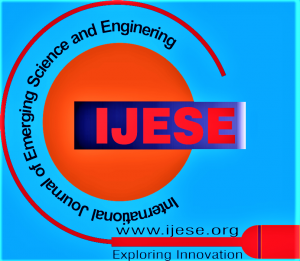![]()
Systematic Simulation and Characterization of LLC Resonant Converter Operating Regions
Sushil Bhartoon1, Tanmay Dharma2, M.P.S. Chawla3, Khushboo Nagar4
1Sushil Bhartoon, Department of Electrical Engineering, Shri G.S. Institute of Technology and Science, Indore, (M.P.), India.
2Tanmay Dharma, Department of Electrical Engineering, Shri G.S. Institute of Technology and Science, Indore, (M.P.), India.
3Prof. M.P.S. Chawla, Department of Electrical Engineering, Shri G.S. Institute of Technology and Science, Indore, (M.P.), India.
4Khushboo Nagar, Assistant Professor, Department of Electrical Engineering, Shri G.S. Institute of Technology and Science, Indore, (M.P.), India.
Manuscript received on 23 May 2025 | First Revised Manuscript received on 26 May 2025 | Second Revised Manuscript received on 04 June 2025 | Manuscript Accepted on 15 June 2025 | Manuscript published on 30 June 2025 | PP: 7-14 | Volume-13 Issue-7, June 2025 | Retrieval Number: 100.1/ijese.G260713070625 | DOI: 10.35940/ijese.G2607.13070625
Open Access | Editorial and Publishing Policies | Cite | Zenodo | OJS | Indexing and Abstracting
© The Authors. Blue Eyes Intelligence Engineering and Sciences Publication (BEIESP). This is an open access article under the CC-BY-NC-ND license (http://creativecommons.org/licenses/by-nc-nd/4.0/)
Abstract: This paper presents an LTspice simulation study investigating the operational characteristics of an LLC resonant converter across its three distinct operating regions: at, above, and below the resonant frequency. This research aims to comprehensively understand the converter’s behaviour, which is essential for optimising its design and performance in power electronic applications such as telecommunications, data centres, and Electric Vehicle charging. The methodology involved detailed analysis of key waveforms—inductor currents, output voltage, and diode currents under controlled frequency variations, with simulations conducted at 300 kHz, 459 kHz (resonant), and 600 kHz. Discoveries show that resonant operation yields favourable soft-switching, while deviations, especially those occurring below resonance, increase component stress and lead to harder diode switching and higher peak currents. The phase relationship between magnetizing and resonant inductor currents indicates the operating regime. Despite varying switching conditions, excellent output voltage regulation was consistently maintained. These findings provide valuable insights into the trade-offs between operating frequency, component stresses, and switching losses, affirming that operating near resonance offers an optimal balance.
Keywords: LLC Converter, Resonant Frequency, switching frequency, Inductor Current, Diode current, ZVS, ZCS.
Scope of the Article: Electrical and Electronics
